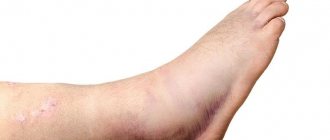Ovarian cancer is one of the most commonly diagnosed women's diseases. Not only the reproductive function, but also the life of the fair sex depends on the correctness of its treatment. Nutrition for ovarian cancer plays a huge role, as it makes it possible to enhance the effect of treatment.
Nutrition during chemotherapy for ovarian cancer should be such that it fully meets the patient’s needs for vitamins, minerals, and other beneficial substances.
General rules
Ovarian cancer is one of the most common types of cancer in women.
It is characterized by a highly aggressive course and has the highest mortality rates among tumors of the female reproductive system, which is largely explained by the difficulty of diagnosing it in the early stages of the disease. There are primary cancer (the tumor initially develops as malignant), secondary (develops against a benign background), and metastatic cancer (develops as a result of the spread of tumor cells from other places through the blood/lymph flow). Metastasis of ovarian cancer most often occurs in the peritoneum, in the omentum, and less often in the retroperitoneal lymph nodes. The main risk factors for ovarian cancer are: age (55-60 years), genetic predisposition, hormonal factors associated with ovulation.
At an early stage, ovarian cancer does not have any pronounced specific symptoms, therefore, in 70% of cases, ovarian cancer has already spread beyond the pelvic cavity before the diagnosis is made. And only in the later stages (3 and 4) the disease can manifest itself:
- Dull/aching pain in the lower abdomen (on the affected side).
- Frequent urination/ constipation caused by compression of the intestines/bladder by the tumor.
- Ascites (fluid accumulation), accompanied by an enlarged abdomen.
- General intoxication (weakness, sweating , increased fatigue, weight loss, anemia , severe loss of body weight).
The leading role in the treatment of ovarian cancer is given to surgery. Its main goal is to reduce the volume of tumor masses. The extent of the operation is determined using surgical staging , which includes examination of all abdominal organs, biopsy of the omentum, peritoneum, diaphragmatic surface, suspicious lymph nodes (for the presence of metastases) and cytological examination of peritoneal washings.
The standard scope of the operation is extirpation of the uterus with appendages (ovaries/fallopian tubes) and removal of the greater omentum. If indicated, lymph nodes are additionally removed. And only for patients with stage I of the disease, if they wish to preserve fertility /childbearing function, removal of the tumor/uterine appendages can be performed on one side.
The surgical method, as an independent option, is used only for stage I cancer. In other cases, a prerequisite for effective treatment/prevention of metastasis is several courses chemotherapy , in which cytostatic drugs are administered intramuscularly/intravenously/into the abdominal cavity or taken orally. radiation therapy are used in some cases as additional treatment methods .
Properly organized nutrition for ovarian cancer is the most important component at all stages of complex treatment, which helps reduce the likelihood of developing distant relapses/postoperative complications. Nutrition becomes especially important during chemotherapy sessions, which are accompanied by a number of side effects - nausea, vomiting, loss of appetite, impaired liver/kidney function, and suppression of hematopoiesis.
The diet for ovarian cancer is tailored individually. When prescribing a diet, it is necessary to take into account the stage of the disease, its course, age, and treatment. Thus, in stage 1 ovarian cancer, in which chemotherapy is not carried out, the nutrition of operated/non-operated patients is based on the principles of physiologically nutritious nutrition. At the same time, it is recommended to limit/exclude in the diet:
- Red meat, especially fatty, smoked and fried meat, waterfowl meat (duck, goose), refractory animal fats, offal, semi-finished products, sausages, fast food, canned food, frozen foods.
- Flour products, processed cheese, strong meat/fish broths, baked goods, mayonnaise, baker's yeast, sharp fatty cheeses, whole milk, packaged juices, carbonated drinks.
- Products containing table salt, marinades, pickles, simple carbohydrates (sugar, confectionery, sweets), hot spices/herbs.
At the same time, it is recommended to increase the content of vegetarian products (vegetables, grains, fruits, berries) and introduce a fractional diet in small portions. It is important to take into account the energy value of the diet in order to adequately replenish the energy/plastic needs of the patient’s body.
To increase immunity and the activity of antitumor protection factors, it is recommended to include red/yellow/orange fruits/vegetables in the diet (grapefruits, apples, lemons/tangerines, apricots, radishes, carrots, beets, turnips, tomatoes, pumpkin, plums), seaweed ( spirulina), various seeds/nuts, leafy greens (celery, basil, parsley, onion, spinach, rosemary, caraway, thyme, garlic, parsnips, lettuce), sprouted wheat grains, various bee products (royal jelly, honey, propolis, pollen ), legumes (lentils, asparagus, soybeans, peas), green tea, spices/herbs (turmeric, cinnamon, mint, cloves).
The volume of free liquid should be at least 1.5-2.0 l/day, mainly in the form of green tea, non-carbonated mineral waters, fresh vegetable/fruit juices, and fermented milk drinks.
What complications are ascites dangerous for ovarian cancer?
The fluid accumulating in the abdominal cavity squeezes the diaphragm towards the lungs, the breathing process becomes difficult, tissue and brain cells experience oxygen deficiency. This is manifested by pale skin, dizziness, shortness of breath, fatigue, lethargy and swelling. The cardiovascular system suffers, the functioning of internal organs is disrupted.
Malignant neoplasms appear in the gallbladder and liver, pancreas, and on the walls of the stomach. Fluid pressure can lead to rupture of the inflamed ovary and sepsis.
The danger is directly related to the volume of transudate in the abdominal cavity. The greater it is, the higher the intra-abdominal pressure, which affects the diaphragm and lifts it towards the chest cavity.
As a result, the respiratory excursion of the lungs decreases, their ventilated area decreases, and respiratory failure develops. Symptomatically, it manifests itself as shortness of breath, “blueness” of the skin, dizziness and weakness.
In addition, cardiac activity is impaired, blood circulation slows down and organ dysfunction is noted. Due to the accumulation of a large volume of transudate in the bloodstream, the protein concentration decreases, which provokes the appearance of edema. Also, water and electrolyte disturbances are observed.
Authorized Products
Diet for ovarian cancer includes:
- Non-concentrated soups based on meat broth with the addition of vegetables and cereals.
- Products containing easily digestible animal protein (chicken, beef, turkey, rabbit, cottage cheese, fish, soft-boiled eggs).
- Energy-intensive products - butter, red fish, sturgeon caviar, cream, sour cream, soft-boiled chicken eggs, grain bread, herring, tuna, cheeses, millet porridge, chocolate, honey, nuts/seeds, dried fruits,
- Vegetarian products: various vegetables/fruits - carrots, broccoli, tomatoes, beets, asparagus, eggplant, cucumbers, zucchini, cauliflower, kohlrabi, garden greens, wheat sprouts, grapes, tangerines, strawberries, apricots, pears, peaches, melon, raspberries, bananas, raw/cooked apples.
- Cold-pressed vegetable oils (linseed, olive, sunflower), fish oil.
- As drinks - rosehip decoction, green tea, table water without carbon dioxide, herbal teas, freshly prepared juices.
Diet example
Nutrition for cervical cancer can be quite varied. A sample diet looks like this:
- First breakfast – a glass of vegetable juice;
- Second breakfast - fruit, rosehip decoction, cottage cheese;
- Lunch – vegetable broth soup, a small piece of boiled chicken with a side dish of buckwheat, green tea;
- Afternoon snack – fruit or glass of juice;
- Dinner – vegetable salad with a piece of baked white fish, green tea, rosehip infusion;
- Before going to bed, you can additionally drink a glass of kefir or juice.
By varying combinations of foods, you can create a fairly varied diet.
Diet for any cancer disease is 10-15% of the success of recovery. Nutrition plays a huge role in maintaining a normal balance of microelements and vitamins within the body.
Cancerous tumors release huge amounts of toxins into the body, and proper nutrition is aimed at reducing these levels to a healthy balance. Plus, you need to know what you can and cannot eat if you have cancer, so as not to worsen the condition and increase general intoxication, worsen blood circulation and not accelerate tumor growth.
Plus you need to improve your immunity and speed up cell regeneration. This is especially important after severe chemotherapy, which greatly affects the entire body, poisoning it. A healthy immune system itself will fight malignant cells and attack the tumor.
Useful tips for building a diet during the course
Nutrition during chemotherapy has many nuances. Given the common side effects of treatment with cytotoxic drugs - severe nausea and loss of appetite - the average person will have to significantly change their diet to meet the body's requirements and not cause additional gastrointestinal discomfort.
Oncologists and nutritionists provide a number of universal useful tips that will be useful to all patients during chemotherapy:
- Drink between meals, but not before or after. Drinking liquid before a meal can reduce your appetite, and during and after it can increase nausea and cause bloating.
- Try to take into account the individual characteristics of the body - the time of greatest intensity of appetite, food preferences, etc.
- Switch to fractional meals, include dishes with the consistency of puree in your diet - this will make it easier for the body to absorb them, and the gastrointestinal tract will not react to food with nausea.
- Remember not to feel hungry: prepare small portions of healthy snacks in advance (it is best to use high-calorie foods with maximum nutritional value).
- Eat food at the same time: developing a diet will help produce gastric juice more efficiently and on time.
- If possible, you should avoid fatty, salty and spicy foods, which can aggravate gastrointestinal irritation that occurs during chemotherapy.
- During treatment, you should eat plenty of fresh fruits and juices, but if you have diarrhea, it is recommended to reduce your fiber intake.
- Despite the exclusion of seasonings and specific requirements for heat treatment (it is advisable to boil, bake or steam food), the food must be tasty. To increase appetite, you can use, among other things. folk methods (tinctures, decoctions, etc.).
Depending on the type of tumor and the side effects of the chemotherapy regimen, the oncologist may prescribe a specific diet: for example, for prostate cancer, it is not recommended to consume more than 600 mg of calcium per day, which is no more than 50% of the daily value of a healthy person.
Traditional recipes for treating chaga for ovarian cancer
The herbal remedies described below have powerful effects. They can be used in combination with formal treatment or on their own. You can take two or three different infusions from various herbs and mix them in a certain dosage, in 50 g of water, and drink without fear. Dry herbal preparations are also successfully used, which are mixed in equal proportions and brewed one tablespoon per regular glass of boiled water, and then left for several hours in a thermos. Such solutions should be drunk in a third of a glass. Dose: three times every 24 hours before meals. Here are recipes for using plants for ascites:
- Take a tincture of the root of the Astragalus membranaceus plant in 60-72% alcohol. The concentration should be one to five. Infusion is carried out for 14 full days. Take the medicine, twenty drops three times every 12 hours before meals. It must be remembered that this remedy can lower the patient’s blood pressure.
- You need to take 20 g of marsh calamus root in crushed form. Pour in half a liter of alcohol or vodka. Infusion should be carried out for 7 days. The medicine should be used three times a day, one small spoon half an hour before meals.
- You need to take the dry powder of the Euphorbia Pallas plant and take it orally. Quantity - on the tip of a teaspoon (about three heads of matches). Dose: three times a day before meals, washed down with water. The same powder can be used to cover cancer ulcers and decaying tumors.
- The crushed roots of the European hoofed grass herb (20 g) should be poured with 0.1 liters of vodka and left for 11-14 days. Use in the following dose: three times at 18 hours, 20 drops before meals. This tincture may raise the patient's blood pressure.
- The crushed herb of the Siberian princeling plant (take one small spoon) is poured into 0.1 liters of hot water and infused for an hour. Take 1 spoonful 3 times a day (before meals). May raise the patient's blood pressure.
- Grind the roots of the marsh cinquefoil plant, then fill a liter glass jar with the mixture, fill it to the top with water, and then leave it for 14 days. The jar should be in a dark, cool place. Take a tablespoon after meals three times a day. It is also possible to rub this medicine externally: this is done in the abdominal area.
Medicinal plants bring relief from malignant tumors by relieving inflammation. Using folk remedies, the tumor can decrease in size, pain, dyspepsia, nausea, vomiting disappear, and stools become normal. Appetite returns and general condition improves.
However, the use of traditional recipes cannot always get rid of the tumor. However, one cannot deprive the patient of hope for a cure with herbs, especially if oncologists consider radical treatment impossible for one reason or another. Although traditional medicine cannot cure many types of cancer, it can alleviate suffering and prolong life.
Herbal remedies can be especially helpful during chemotherapy. During chemotherapy, plants such as chamomile, sage, valerian, motherwort, birch buds, string, raspberry, oregano, St. John's wort, calendula, linden, coltsfoot, and rose hips can be used in a mixture with golden mustache. Their use reduces the negative side effects of chemotherapy and improves the overall well-being of women.
Traditional recipes for the treatment of ovarian tumors
The first treatment option suggests drinking fresh beet juice. To do this, you need to squeeze out the juice and drink a glass of juice three times a day. The juice must be fresh, so it is better to prepare it in three servings per day.
Further, traditional medicine advises using miraculous propolis treatments to treat ovarian cancer. The best option is to consume two grams of propolis per day. Propolis can be purchased at a pharmacy or bee farm. Divide the daily two grams into several small portions and chew them thoroughly, and then swallow them. The effect of propolis is really very strong.
You can also use alcohol tincture of propolis in the treatment of cancer. To do this, you need to dilute 30 drops of propolis tincture in a small amount of water and take it once a day, regardless of meals.
You need to take two tablespoons of crushed cherry laurel leaves and pour milk over them. Bring the mixture to a boil, stirring it constantly. Then wrap the vessel in towels and let it cool gradually. Strain into particles from the decoction. Drink a glass of decoction before meals three times a day.
These folk remedies for treating ovarian cancer can and should be used in combination. The treatment should be carried out for three weeks, then take a three-four day break and repeat the three-week course again. This treatment for ovarian cancer should last at least four months. This is exactly how long it takes for the positive result of the fight against cancer cells to develop and take hold.
Such treatment requires regularity, accuracy and diligence. Prepare in advance.
Chaga (birch mushroom, beveled tinder fungus) is a growth on a tree trunk, belongs to the tinder fungus family. Chaga is found in old damp birch forests and is considered a rather rare mushroom, despite being very much in demand in medicine. From Russian chronicles it is known that treatment with this remedy was carried out back in the time of Vladimir Monomakh. He, as modern doctors who studied the chronicle description of his illness suggest, had lip cancer. The mushroom is also effective in the treatment of ovarian cancer.
Chaga contains oxides of aluminum, iron, silicon, potassium, magnesium, manganese, copper, sodium, zinc, as well as oxalic, formic, acetic, butyric, vanillic, parahydroxybenzoic acids, free phenols, polysaccharides, glucose, galactose, xylose.
How to prepare a folk remedy with chaga?
In Russia, when treating with birch fungus, infusions were used, which were considered a good folk remedy against malignant tumors. Chaga has been used especially effectively when radiation therapy and surgery are not indicated. It cannot, of course, be said that chaga cures this disease, but it has been proven that it relieves some of its manifestations, alleviates the condition of such patients, and relieves pain. In some cases (especially at the beginning of the disease) it delays the development of the disease.
For preparation you need: 100 g of dry birch mushroom, 500 ml of boiled water. Preparation. Pour the chaga mushroom with warm water, leave for 4 hours, then remove (save the infusion) and pass its pieces through a meat grinder or grate, add warm water again, leave for 48 hours. Drain the liquid, squeeze out the mushroom mass and remove, mix both infusions. Store for no more than 4 days.
Take 1 glass 3 times a day before meals. Extract and tablets based on birch mushroom are taken according to the instructions for use. The course of treatment is 3-5 months.
When treating with this folk remedy, a dairy diet is useful; meat, fats, smoked foods and spicy seasonings are excluded from the diet. At the same time, it should be taken into account that treatment of ovarian cancer with chaga is not beneficial for everyone. Chaga preparations are contraindicated for patients with colitis and chronic dysentery. You should not take Penicillin or administer intravenous glucose. When stored in a dry place, chaga retains its properties for up to 2 years.
Of course, you shouldn’t deprive yourself of professional treatment, but supporting the body with the help of folk remedies won’t hurt. Of course, it is better to coordinate your actions with your doctor so as not to harm the situation. After all, treatment for ovarian cancer can be organized in different ways. Use those tools that do not seem potentially harmful or dangerous. In particular, this applies to any physical procedures, thermal procedures, and other strong effects on the body.
I want to talk about traditional methods of treating ascites. All of them are aimed at making the patient urinate more often.
Unfortunately, no herbs will be as effective as medical diuretics.
Required product groups
There are several groups of foods that must be included in the diet during chemotherapy for malignant tumors. Not only his well-being, but also the condition of his internal organs during cancer treatment depends on how the patient follows the rules of nutrition.
Vegetables and fruits
The group of vegetables and fruits is considered one of the most important for any severe systemic diseases, including cancer. Together with fresh vegetables, fruits and juices, a person receives vitamins, minerals, fiber, flavonoids, fruit acids and tannins. They help the functioning of the gastrointestinal tract, replenish the deficiency of substances necessary for the body and partly prevent infectious complications that can occur with leukopenia.
Which doctors should I contact and when?
Oncologists and gynecologists treat ascites due to ovarian cancer. If your abdominal circumference increases, pain increases, swelling and weakness appear, you should consult a doctor. These symptoms indicate progression of the disease, which requires adjustment of treatment therapy.
Thanks to additional instrumental techniques (ultrasound, tomography), the doctor assesses the extent of the oncological process, the volume of transudate and the condition of surrounding organs. In addition, it is possible to perform a puncture to examine the fluid for the presence of cancer cells and determine the amount of protein lost.
What to do if you have severe nausea and lack of appetite during chemotherapy
During chemotherapy, the patient’s diet is structured in such a way as to minimize the symptoms of side effects - nausea and loss of appetite. However, with an intensive course of treatment, doctors do not guarantee that even the most diligent patient in following the prescribed diet will not experience discomfort.
To reduce nausea and stimulate appetite, you can use these simple tips:
- If nausea has already appeared before eating, a slice of fresh lemon without sugar will help to cope with it: such a portion is not enough to irritate the gastrointestinal tract, but it increases appetite and prevents vomiting. If stomach irritation is severe, lemon can be replaced with a piece of ice or popsicle.
- Before sessions of administration of cytostatics and radiation, you should not eat heavily; it is better to limit yourself to a small portion of fruit or vegetable puree and juice.
- Food should be at room temperature or slightly warm: hot food can cause gastrointestinal irritation, and cold food can cause bloating.
- You should not eat immediately before bed: 1.5-2 hours should pass between dinner and night rest.
- In the absence of exacerbations from the stomach, ginger tea can be consumed to combat nausea (for gastritis, it should be drunk at least 40-60 minutes after a meal - for example, morning oatmeal).
When practicing these tips, the patient should listen sensitively to the body's reaction. If you experience a burning sensation or pain in your stomach, you should immediately stop consuming the above products. In some cases, doctors recommend exclusively medications or even avoidance of any medications if nausea is tolerable. We wrote more about how to get rid of nausea in our other article.
Categories of people at increased risk of this disease
First of all, women whose close relatives had similar problems at a young age, under 40, need to be attentive. The following conditions increase the risk of uterine cancer:
- Endometrial hyperplasia is the excessive growth of endometrial cells on the inner surface of the uterus and its cervix. This type of tumor is not malignant in nature, but is prone to degeneration into it. External manifestations of hyperplasia are painful and excessively heavy periods with bleeding between them, and after menopause periodic bleeding;
- Excess weight also increases the risk of cancer of the endometrial cells of the uterus;
- Early, before 12 years and late after 55 years of menstruation indicate a physiology predisposed to disorders of cellular genesis and the appearance of a malignant focus in the uterus;
- Long-term use of hormonal drugs, such as estrogen, for menopause replacement treatment or tamoxifen, for the treatment of breast cancer;
- Radiation therapy focused on the pelvis;
- Not proper nutrition. Women whose diet is dominated by fatty foods of animal origin get sick more often than vegetarians.
Belonging to a risk group is far from a reason to panic and rush to the doctors, but it is still worth reconsidering your lifestyle. It may be worth changing your diet - adding plant foods, playing sports, and giving up bad habits at least twice a year, undergoing an examination by a gynecologist and, at the slightest suspicion of oncology, seek help immediately.
Prohibited and undesirable types of food in the treatment of cancer tumors
As part of the necessary food groups, there are a number of products that are not recommended by gastroenterologists for consumption if there is a high risk of gastrointestinal irritation.
Products not recommended for consumption:
- Bread and pastry products. Pies, rye flour products, pancakes, baked goods
- Meat products. Fatty and stringy meat, industrially processed products, canned food, combination of meat with dough, fried and stewed meat
- Seafood. Canned, fried, salted and smoked fish and other seafood
- Eggs. Raw protein, hard-boiled eggs, scrambled eggs, and in case of exacerbations - and yolk
- Fats. Refined vegetable oils (olive, flaxseed, sunflower) and butter (in the absence of other recommendations)
- Dairy and fermented milk products. Fermented milk dishes with high acidity (kefir, sour cream), heavy cream and milk, sharp cheese
- Vegetable protein sources. Buckwheat (kernel cereals must be replaced with flakes), barley, barley, beans, millet cereals
- Vegetables. Mushrooms in any form, pickled, fried, salted and pickled vegetables, for exacerbations of gastrointestinal diseases - sour fresh vegetables (primarily white cabbage, spinach, tomatoes, eggplants)
- Soups. Cabbage soup, pickle soup, mushroom soups, okroshka with any dressing, fatty fish and meat broths, for exacerbations - green borscht, spinach soup
- Sauces. Hot sauces, spices. To reduce swelling, it is recommended to reduce salt intake
- Fruits. Fresh fruits and berries (excluding bananas and sweet apples), unripe and sour fruits/berries even after heat treatment, dried fruits (dried apricots and prunes can be eaten infrequently)
- Confectionery. Halva, rich cream with vegetable fats, chocolate
- Beverages. Caffeine-containing, carbonated and alcoholic drinks, sour and homemade juices, kvass
Forecasts for the course of the disease
The main question is how long do women with uterine or cervical cancer live? The answer depends primarily on the stage of the disease and the histology of the cancer cells.
Zero – the stage of appearance of cancer cells, the least dangerous – a complete cure is almost always possible. Such patients live after anti-cancer therapy, live as long as they want. At the first stage of the disease, at least 8 out of 10 women who have undergone complex therapy live more than five years. The second stage leaves only 6 out of 10 patients a chance of five-year survival; the third stage is treated very poorly, only a third survive for 5 years. But how long do patients with stage 4, the last stage of uterine cancer live, is a complex and practically unpredictable question. Here everything depends on a large number of factors - how old the patient is, what is the general physical condition of the body - its susceptibility to radiation and chemotherapy, what is the degree of differentiation of the tumor. And even with the most favorable combination of all these factors, patients with stage 4 uterine cancer have a low chance of five-year survival - no more than 7%.
Proper nutrition when diagnosing cancer is not a separate treatment method, but diet therapy helps to activate the body's defenses.
The diet is also prescribed for uterine cancer. Preference is given to products containing antioxidants, alkalis, and natural acids. But this is not enough. In order for diet therapy to produce results, it is important to follow the rules of nutrition when undergoing chemotherapy, before a hysterectomy, and during radiation treatment.
Sample menu when taking cytostatics
With the right approach, healthy eating is not only healthy, but also tasty. For a visual demonstration, you can give an example menu for a patient undergoing chemotherapy.
- Omelette with toast, carrot juice.
- Cottage cheese casserole, banana and chamomile tea.
- Muesli with low-fat yogurt.
- Rice porridge with a small amount of dried apricots, diluted juice or herbal tea.
- Potatoes with steamed fish, steamed or fresh vegetables.
- Beetroot soup, steamed meatballs, a portion of buckwheat flakes.
- Green salad with seafood, dressed with unsweetened yogurt.
- Baked apples with nuts and honey.
- Ratatouille, a couple of pieces of hard cheese.
- Stewed cabbage with lean red meat (veal).
If you follow the oncologist's recommendations, the practice of diet therapy helps not only to eliminate the unpleasant side effects of taking cytostatics, but also to maintain the body's strength during the fight against cancer.
Therapeutic measures
Treatment of uterine cancer, like any other malignant tumor, can only be successful with the complex use of known methods - surgery, radiation, chemical and hormonal therapy. The number of methods and their combinations are selected by the doctor depending on the indications for each patient individually.
Surgery
It is believed that without an operation to surgically remove the tumor focus, it is extremely difficult, and sometimes impossible, to achieve positive results, therefore, most often, to combat uterine cancer, a hysterectomy is performed - complete removal of the uterine body.
Depending on the indications, the operation can be extended to the ovaries with fallopian tubes, the vaginal area and regional lymph nodes affected by metastases of the primary tumor.
The operation is relatively simple and the patient is often discharged from the hospital within a week after the operation, and 1 to 2 months are enough for rehabilitation and return to a normal lifestyle. Sometimes postoperative side effects occur, for example, nausea, increased fatigue and weakness, problems with urination, but this is a temporary phenomenon, and everything returns to normal over time.
Patients who undergo hysterectomy during their childbearing years lose the ability to become pregnant and bear a child. After the operation, they experience hot flashes, increased sweating (especially at night) and unusual vaginal dryness for some time. This is due to a significant decrease in the amount of female hormones.
When lymph nodes are removed, swelling of the lower extremities often occurs - lymphedema. To relieve this symptom, therapeutic massages and creams are used.
Radiation therapy
Radiation therapy is used both before surgery to minimize the size and activity of the tumor, and after, to reduce the risk of relapse. Radiation is also used in cases of severely advanced disease, when surgical intervention is impossible or not advisable.
Radiation therapy is divided into 2 types according to the site of application - external and internal. In the first case, irradiation is carried out into the pelvic area from outside. The course of treatment, as a rule, lasts from one to several weeks - the tumor is irradiated 5 times a week, for several minutes. In the second case, a special micro-emitter is used, inserted into the vagina - closer to the tumor site.
Diet rules during treatment
During chemotherapy, the body tries to intensively restore healthy tissue. Naturally, the patient loses her appetite during this period. But energy to fight the disease must be obtained from all possible sources, so she will have to eat. The following nutritional rules can be identified that contribute to the fastest treatment of cancer:
- The diet should consist mainly of fruits and vegetables.
- The patient is advised to eat foods containing protein: yoghurt, cottage cheese, legumes, lean meat, fish and poultry. It helps damaged cells recover faster. In addition, the fatty acids contained in fish slow down the development of malignant cells.
- Meat should also be consumed. However, it should be non-greasy. It is better to buy rabbit, veal, chicken. Naturally, it is not recommended to get carried away with these products - portions must be small.
- You cannot ignore whole grains, cereal foods, and porridges.
- Fermented milk products are an important part of the diet.
- The ovarian cancer diet includes seafood and leafy greens. They help reduce the rate of tumor growth.
It is better to eat plant foods mainly raw so that all the beneficial substances are preserved. As for meat and fish, these ingredients can be boiled, stewed, baked and steamed. It is not advisable to put animal fat in dishes. You need to eat in small portions. The next meal should be every 3 hours. If a woman has lost a significant amount of body weight, then the calorie intake should be increased.
Results and reviews
Despite the fact that for ovarian cancer , nutritional therapy does not apply to independent methods of treatment, it is properly organized dietary nutrition, according to patient reviews, that helps to normalize the general condition, especially against the background of chemotherapy.
- "… I am 55 years old. Ovarian cancer was diagnosed with metastasis to the peritoneum. They operated on. The operation was very difficult. But my health especially worsened after the prescription of cytostatics. My appetite disappeared completely, and even the sight of food caused nausea and vomiting. Lost 8 kg in 3 weeks. They prescribed a high-calorie diet. They bought special mixtures, on which I survived, and then they bought me very high-calorie foods and monitored the regularity of food intake and its volume. After finishing chemotherapy, her condition improved. My appetite has more or less returned to normal, and the weight gap has been eliminated.”
What foods should you not eat?
During cancer treatment, some foods are prohibited for consumption. Both after and before surgery, it is necessary to completely exclude from the diet those foods that require too much body energy to digest. The fact is that chemotherapy takes too much effort. And some products even neutralize the entire effect of treatment. It is necessary to eliminate from the diet:
- Bread or other baked goods made from premium wheat flour.
- Products or dishes containing preservatives, nitrates or food additives. They will only worsen the patient's condition.
- Dishes containing large amounts of fat, spices or salt are considered very difficult for the body. Even meat or fish broths are prohibited.
- Strong tea, all types of coffee, as well as alcohol.
- Sweet foods, including chocolate.
- Spices and any seasonings.
- Semi-finished products.
Minimum required knowledge about tumors
Cancer of the body or cervix occurs when the normal process of cell growth is disrupted and dead cells are replaced by new, healthy ones. A failure and cell division occurs, which becomes uncontrolled - their number begins to rapidly increase and form into tumor tissue. A neoplasm occurs, most often in the cervix, which can be either benign or malignant, giving metastases.
If benign neoplasms are relatively harmless and their timely treatment, for the most part, leads to a complete and final recovery - relapses occur extremely rarely, then malignant tumors, especially the cervix, often lead to surgery to remove the woman’s reproductive organ. And even after such an intervention, not all patients live long.
Diet after hysterectomy
Nutrition after surgery to remove the uterus should be gentle. The body needs to recover from the stress that surgery has caused it.
You can’t suddenly return to your usual serving sizes. After recovering from anesthesia, the patient is allowed to drink exclusively clean water without gas. Only after a few hours, and sometimes after a day, is the first meal allowed.
Prohibited during the postoperative period
During the rehabilitation period, foods that irritate the intestinal mucosa are excluded from the menu. Until the body fully recovers after a hysterectomy, avoid:
Healthy foods
During the rehabilitation period it is recommended to use:
- cereal porridge;
- fermented milk products;
- low-fat meat broths;
- nuts.
Fruits and vegetables are an essential element of the daily diet (they help avoid constipation).
We must not forget about the drinking regime. 1.5 liters of liquid, including juices and pure still water, will be enough for a speedy recovery of the body after surgery.
Approximate diet
An approximate menu in the postoperative period looks like this:
- Breakfast: fresh multivitamin – vegetable or fruit.
- Second breakfast – an apple or other fruit, a handful of nuts.
- Lunch – low-fat chicken or veal broth with a small slice of bread, or cereal porridge.
- Afternoon snack – fruit or vegetable, glass of fresh juice.
- Dinner – low-fat cottage cheese.
- Before going to bed, you are allowed to drink a glass of low-fat yogurt or fermented baked milk.











